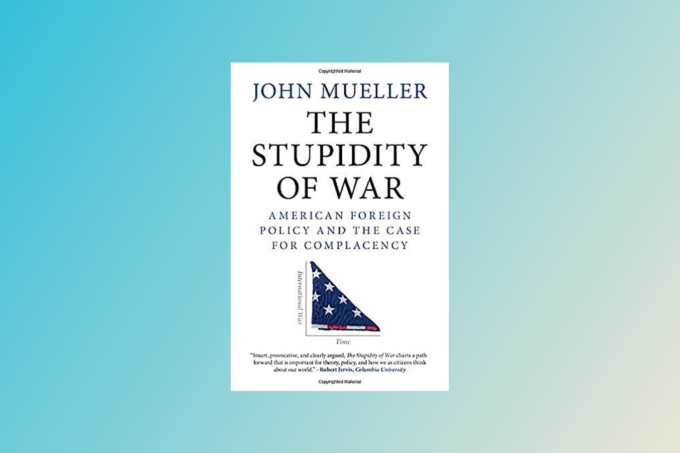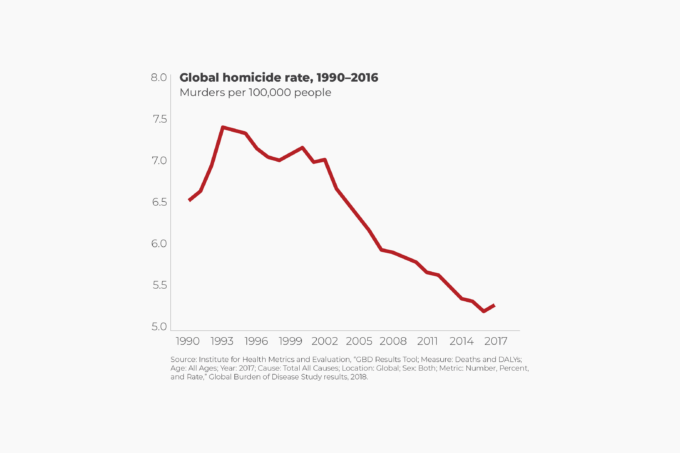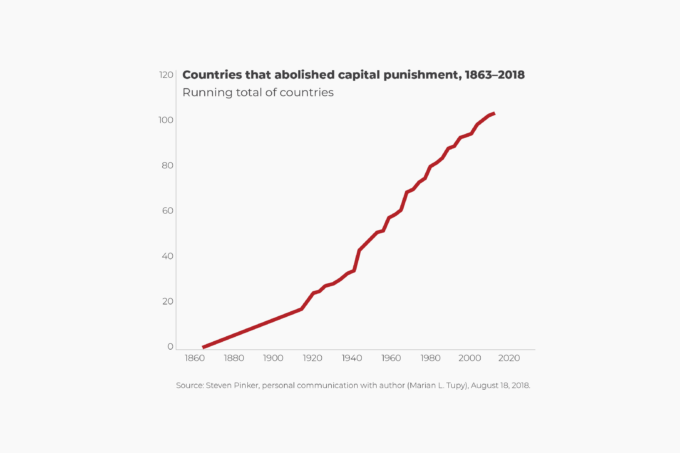In his 2011 book The Better Angels of Our Nature: Why Violence Has Declined, Harvard University psychologist Steven Pinker noted that the frequency, duration, and lethality of international wars started to decline after the end of World War II. This process of pacification, which Pinker calls the “Long Peace,” accelerated after the Cold War ended in 1989. In 2018, the Council on Foreign Relations Global Conflict Tracker registered no international wars—apart from the “frozen” conflicts between India and Pakistan, and between North and South Korea.
As such, the proportion of men and women at arms is at its lowest level since 1989. Armed forces personnel as a share of the global labor force declined from 1.1 percent in 1990 to 0.8 percent in 2016. That’s a reduction of 27 percent. The largest decline—from 5.5 to 2.3 percent—took place in the Middle East and North Africa. That’s a reduction of 58 percent. Central Asia, Europe, and North America also saw steep declines. The only region that became more militarized was South Asia. The armed forces personnel as a share of the labor force in that region rose from 0.5 percent in 1990 to 0.7 percent in 2016.
In actual numbers, total armed personnel in the world rose from 22.2 million in 1985 to 27.5 million in 2016. That’s a 24 percent increase. However, the global population rose from 4.87 billion to 7.63 billion over the same period. That’s an increase of 57 percent. Put differently, the number of armed forces personnel has expanded at less than half the rate of population growth. Had the two grown in tandem, the world would have 34.9 million people at arms in 2016.
There is, of course, no guarantee that the Long Peace will endure. That said, humanity is currently enjoying a historically unique period of interstate peace accompanied by a substantial decline in the militarization of our societies.








